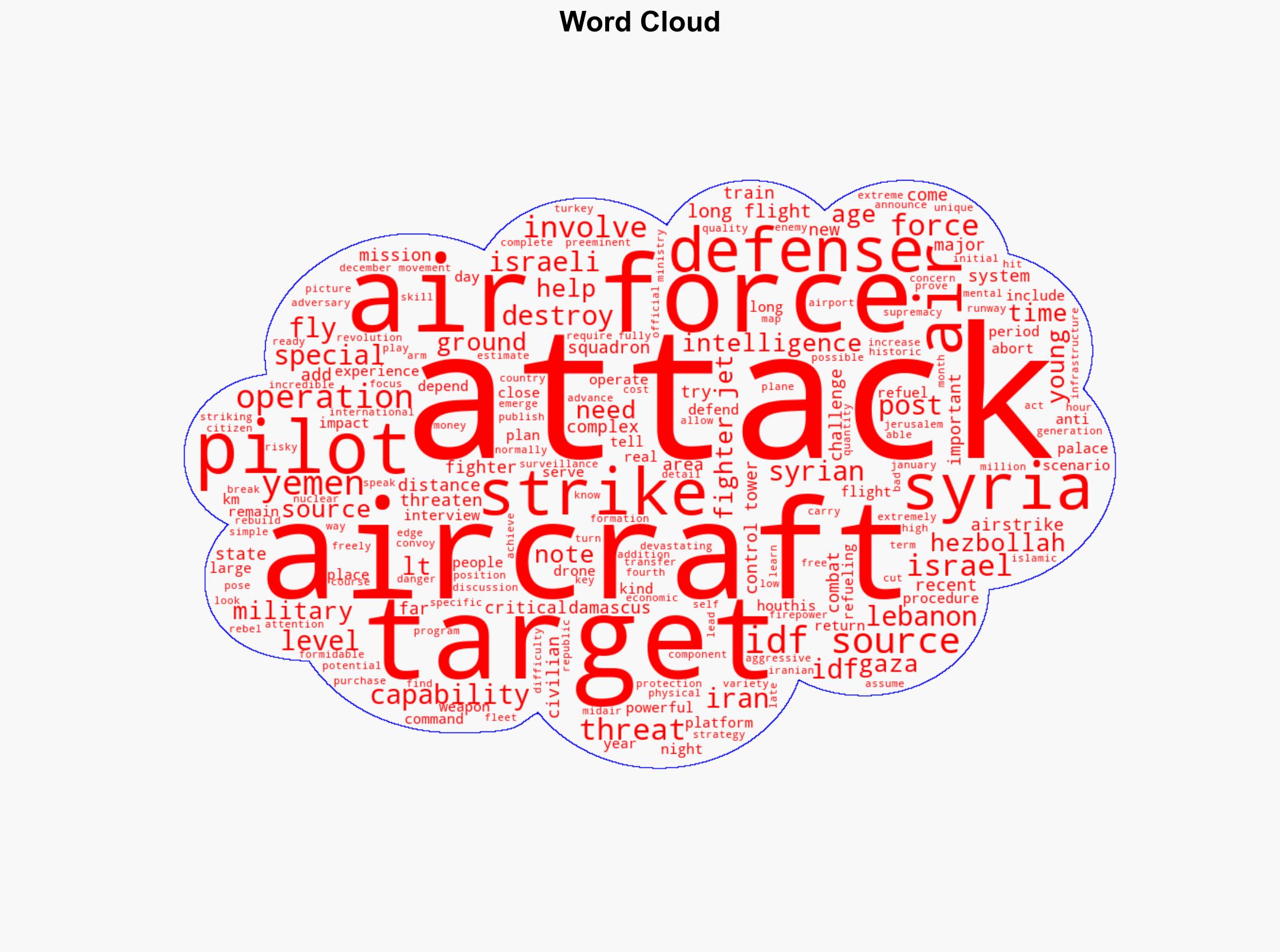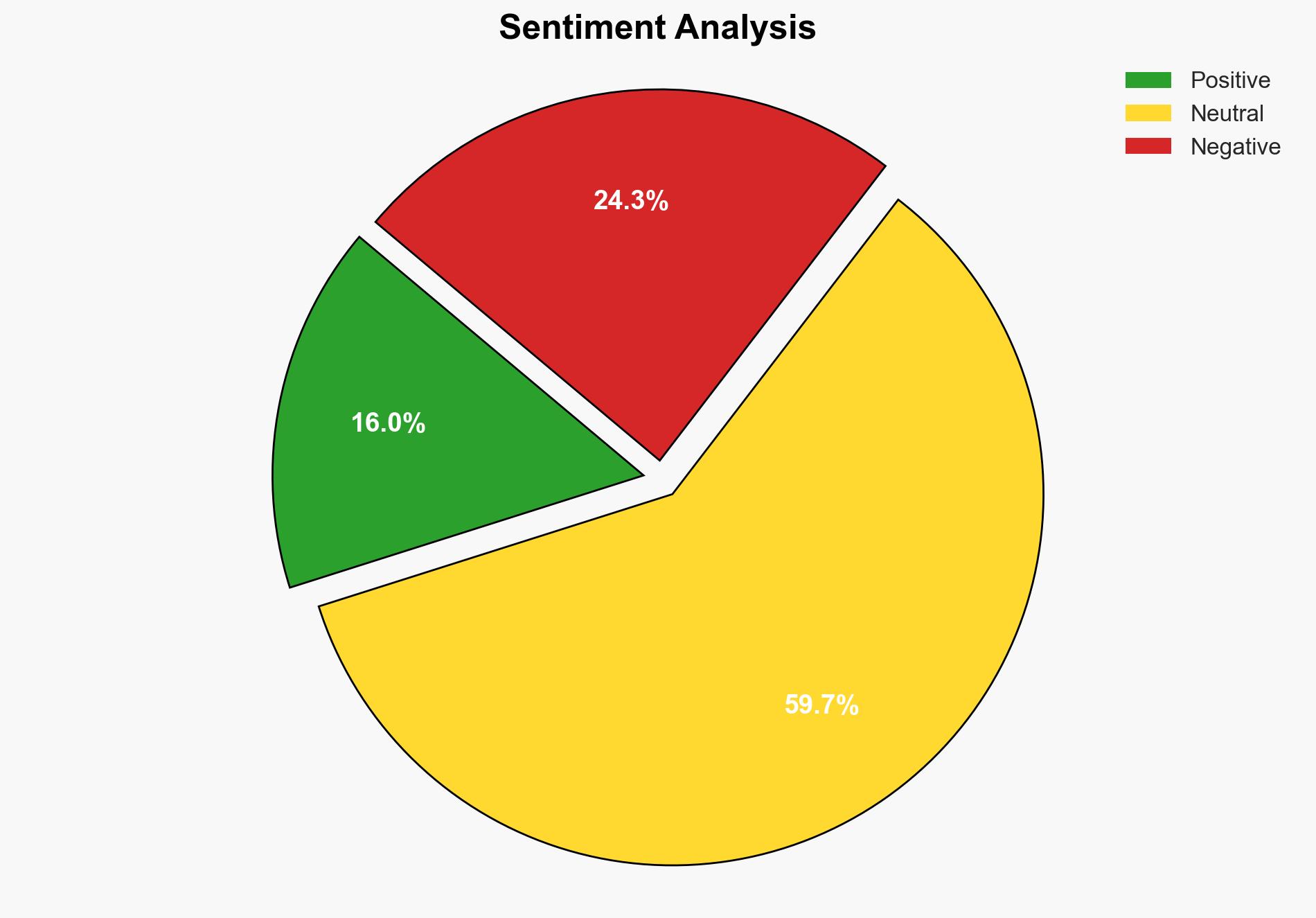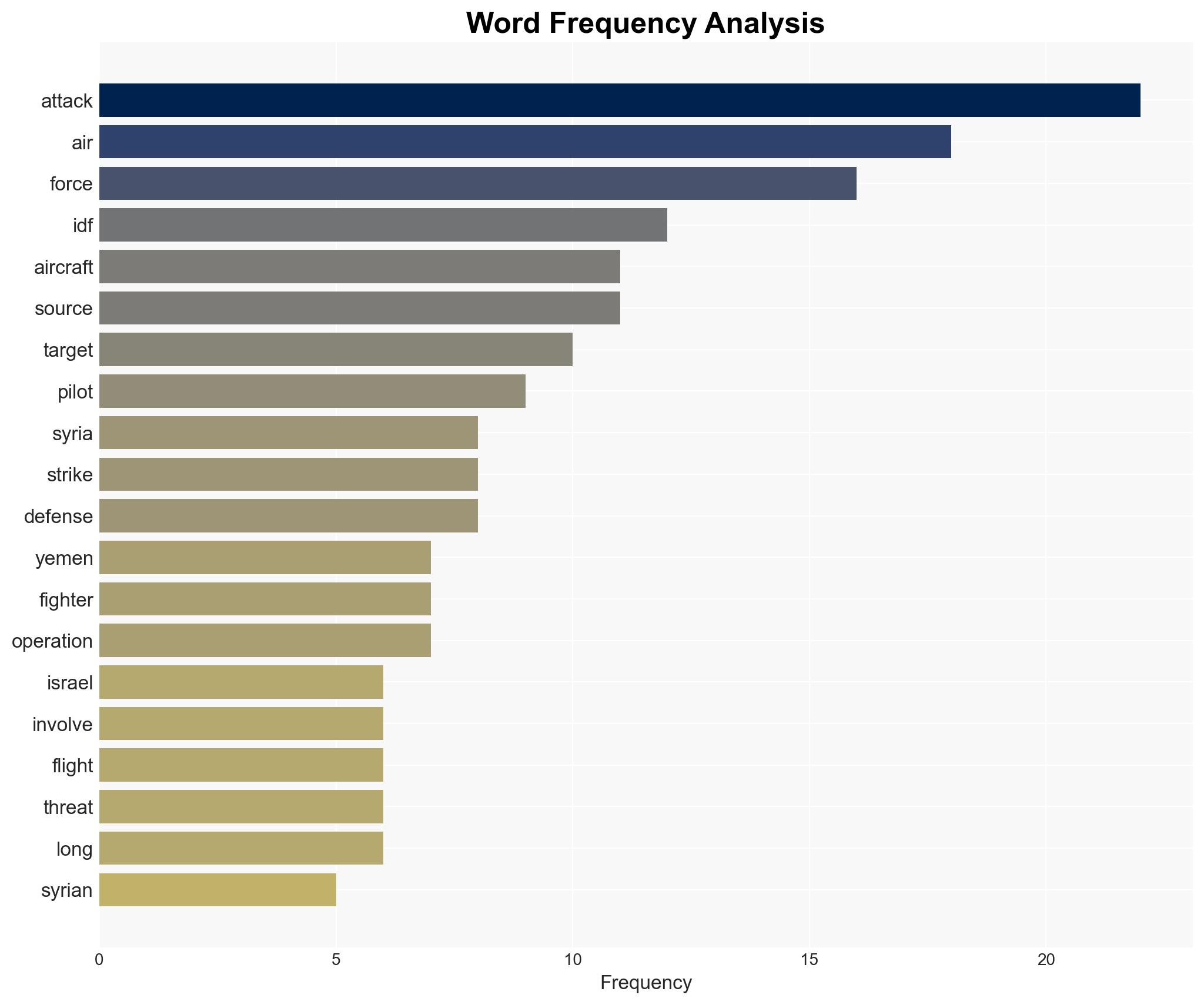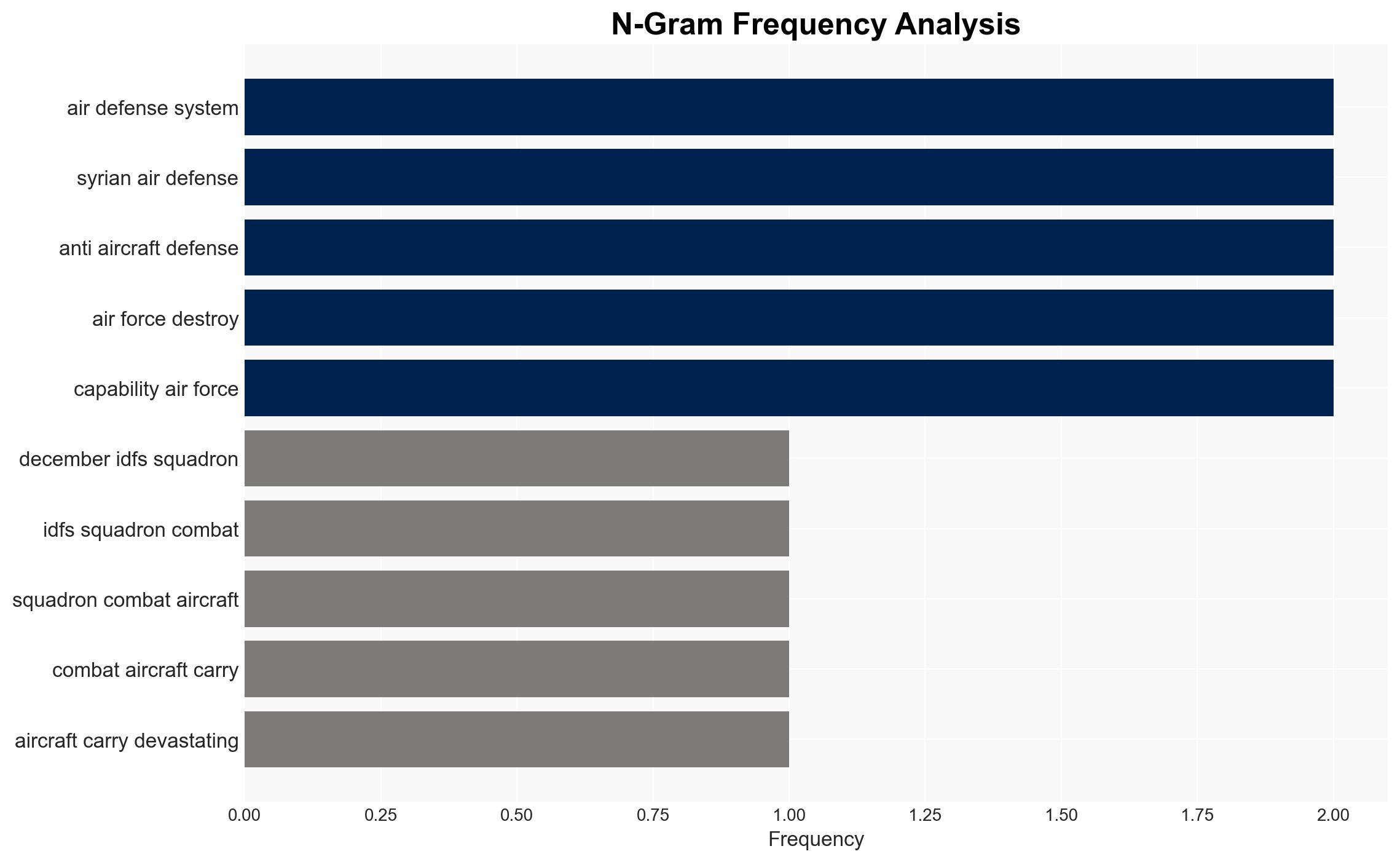Pilot to ‘Post’ How IAF established air dominance over Middle East – The Jerusalem Post
Published on: 2025-04-06
Intelligence Report: Pilot to ‘Post’ How IAF established air dominance over Middle East – The Jerusalem Post
1. BLUF (Bottom Line Up Front)
The Israeli Air Force (IAF) has demonstrated significant air dominance in the Middle East through strategic airstrikes in Syria, Lebanon, and Yemen. These operations have targeted military capabilities threatening Israel, including advanced air defense systems. The IAF’s ability to conduct complex operations, such as midair refueling and long-distance strikes, underscores its operational readiness and technological superiority. Continued focus on enhancing these capabilities is essential to maintaining regional stability and countering potential threats from Iran and allied groups.
2. Detailed Analysis
The following structured analytic techniques have been applied for this analysis:
General Analysis
Recent operations by the IAF have focused on neutralizing threats from Syrian military capabilities and Iranian influence in the region. The airstrikes in Syria, particularly around Damascus, have targeted air defense systems, allowing for greater operational freedom. The IAF’s strategic use of advanced fighter jets and self-protection systems has been pivotal in achieving air superiority. Additionally, the ability to conduct long-range missions, such as those in Yemen, demonstrates the IAF’s extended operational reach and logistical capabilities.
3. Implications and Strategic Risks
The IAF’s operations carry significant implications for regional stability. The destruction of Syrian air defenses could lead to a power vacuum, potentially escalating tensions with Iran and its proxies. The ongoing threat from Hezbollah and the strategic importance of maintaining air dominance over Lebanon and Syria remain critical. Economically, the strikes on infrastructure in Yemen aim to disrupt Houthi capabilities, but may also lead to increased humanitarian challenges. The potential for retaliatory actions from Iran or its allies poses a continuous risk to national security.
4. Recommendations and Outlook
Recommendations:
- Enhance intelligence-sharing mechanisms with regional allies to better anticipate and counter threats.
- Invest in further development of advanced air defense systems and counter-drone technologies.
- Strengthen diplomatic efforts to address underlying regional tensions and promote stability.
Outlook:
In the best-case scenario, continued IAF operations will deter adversarial actions and contribute to regional stability. In the worst-case scenario, increased hostilities could lead to broader conflict involving multiple state and non-state actors. The most likely outcome is a continued cycle of targeted strikes and retaliatory actions, necessitating ongoing vigilance and strategic planning.
5. Key Individuals and Entities
The report mentions significant individuals such as Lt and other unnamed IDF sources. These individuals have provided insights into the operational strategies and challenges faced by the IAF. The entities involved include the Israeli Air Force, Syrian military, Iranian forces, and Houthis in Yemen.




